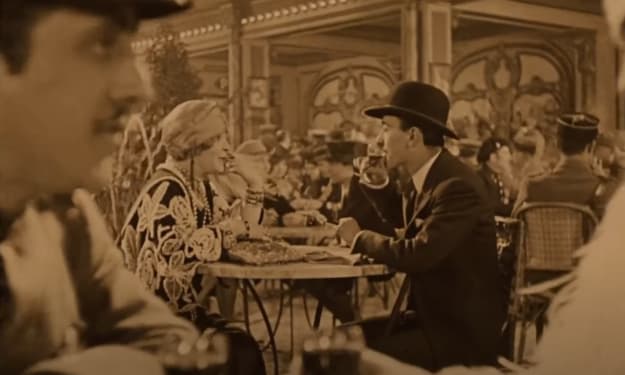A Filmmaker's Guide to: Anagnorisis
Film Studies (Pt.46)

In this chapter of ‘the filmmaker’s guide’ we’re actually going to be learning about literature and film together. I understand that many of you are sitting in university during difficult times and finding it increasingly hard to study and I understand that many of you who are not at university or not planning on it are possibly stuck of what to do, need a break or even need to catch up on learning film before you get to the next level. This guide will be brief but will also contain: new vocabulary, concepts and theories, films to watch and we will be exploring something taboo until now in the ‘filmmaker’s guide’ - academia (abyss opens). Each article will explore a different concept of film, philosophy, literature or bibliography/filmography etc. in order to give you something new to learn each time we see each other. You can use some of the words amongst family and friends to sound clever or you can get back to me (email in bio) and tell me how you’re doing. So, strap in and prepare for the filmmaker’s guide to film studies because it is going to be one wild ride.
Anagnorisis
What is it?

It is the realisation that a character has that changes the course, point or perspective on the story. This is normally towards the end of the text/film/play etc. and has a profound impact on to the way the audience view the piece.
In literature, this can be seen in the last few chapters of a novel. My favourite example of this is in "Anna Karenina" by Leo Tolstoy because the realisation is not very good but then again, it is entirely unavoidable. Anna realises the damage she has done and commits suicide but, this is not the end of the book. In fact, it is not even in the last few chapters of the book.
Books that demonstrate this include but are not limited to:
- Oedipus Rex by Sophocles
- Macbeth by William Shakespeare
- Anna Karenina by Leo Tolstoy
- Invitation to a Beheading by Vladimir Nabokov
- The Picture of Dorian Gray by Oscar Wilde
What about in film?

In film, often the anagnorisis is more dramatic than you may find it detailed in books (apart from in "Anna Karenina" where it takes up several pages and possibly in plays where it is detailed by certain scenes within an act). However, in a film, the anagnorisis is also less easily dictated due to the fact the dramatic nature - it can come off as cliché. Examples of this in film again include but are not limited to:
- Star Wars Episode Five: The Empire Strikes Back (1980)
- Sweeney Todd: The Demon Barber of Fleet Street (2007)
- American Psycho (2000)
- The Others (2001)
- Get Out (2017)
- Us (2019)
- Vertigo (1958)
- Psycho (1960)
The way in which we see the anagnorisis is when the character realises something that now, cannot be undone. It is like having the whole ‘too little, too late’ syndrome going on. Normally, films avoid the cliché by making the realisation something they cannot undo such as a mistake, or a death or grievance. However, now that this has become so commonplace in film and was once commonplace amongst 19th and early 20th century literatures, this has now in itself become a cliché. The question is, where does the anagnorisis go from here and can we take it back to its roots and rebuild it into something else to avoid cliché? The answer is yes. In the postmodern era, the present tense narrator allows the realisation to become known in the films middle, in which the character either refuses, refutes or denies any part in the mistake. Such films as: “Fight Club” (1999), the already mentioned “American Psycho” (2000) and “Memento” (2000) have this within them and seek to change the current state of anagnorisis for the better.
Let's have a look at some primary text examples that seek to teach us about the evolution of anagnorisis.
Further Reading:
- Nabokov, V (2001). Invitation to a Beheading. UK: Penguin Modern Classics.
- Shakespeare, W (2008). The Tragedy of Macbeth: The Oxford Shakespeare. UK: Oxford World's Classics.
- Sophocles (1984). The Three Theban Plays: 'Antigone', 'Oedipus the King', 'Oedipus at Colonus' . UK: Penguin Classics.
- Tolstoy, L (2008). Anna Karenina. UK: Oxford World's Classics.
- Wilde, O (2003). The Picture of Dorian Gray. UK: Penguin Classics.
About the Creator
Annie Kapur
200K+ Reads on Vocal.
English Lecturer
🎓Literature & Writing (B.A)
🎓Film & Writing (M.A)
🎓Secondary English Education (PgDipEd) (QTS)
📍Birmingham, UK






Comments
There are no comments for this story
Be the first to respond and start the conversation.